With restaurants reopening, you might think that it’s safe again to dine out. Not really.
But there are ways to make it safer.
New Yorkers like me have been grabbing quick bites across the city for months, and have even recently started dining indoors again.
It can be a scary and stressful experience, especially in a city where coronavirus killed more than 500 people a day at its peak in April. But sometimes you just crave a dinner out.
If you’re going to do it, take a New Yorker’s advice. Here are nine tips to help keep you safe:
After months of lockdown, you might want to go out and grab a bite with friends.
I totally get it. New York’s stay-at-home order lasted 78 days – the longest in the country. When it lifted, city residents flocked to parks and other public spaces.
But dining out is risky, especially now that we’re in the midst of a fall surge in cases. And it can be particularly dangerous for anyone who is immunocompromised or lives with people who are.
“The bottom line is there is always a risk eating at a restaurant right now,” Dr. Stephen Berger, an infectious disease expert and co-founder of the Global Infectious Diseases and Epidemiology Network, told CNN.
“Eating means having to take off your mask, and that’s the golden rule of avoiding coronavirus.”
He suggests that you “think twice about going to a restaurant.” And if you live in a big city, make it “three times.”
If you still want to go, take every possible step to protect your health and safety.
If you do decide to dine out, call ahead to make sure there isn’t a large crowd and that the restaurant follows proper social distancing guidelines.
I’ve learned to avoid peak days and times, such as Friday dinner and Sunday brunch. When possible, I also make reservations to prevent unnecessary exposure while waiting for an available table.
Many local governments have set occupancy limits on indoor dining. In New York, it’s 25%.
Still, not all restaurants follow the rules. If you find yourself at one that feels too crowded, just pay your bill and leave.
“I think it’s up to the people going out to eat to be mindful of the places they’re visiting, and if the tables are only two inches apart and you don’t see things being cleaned as they should, don’t sit down,” said Demetria Lewis, a bartender at Interboro Spirits & Ales in Brooklyn, which is taking safety measures such as enforcing social distancing, cleaning between each customer and limiting group sizes.
While you have the restaurant host on the phone, ask about their safety measures.
The really careful ones will administer temperature checks, regularly disinfect tables and door handles, enforce face masks and even keep customer records for contact tracing.
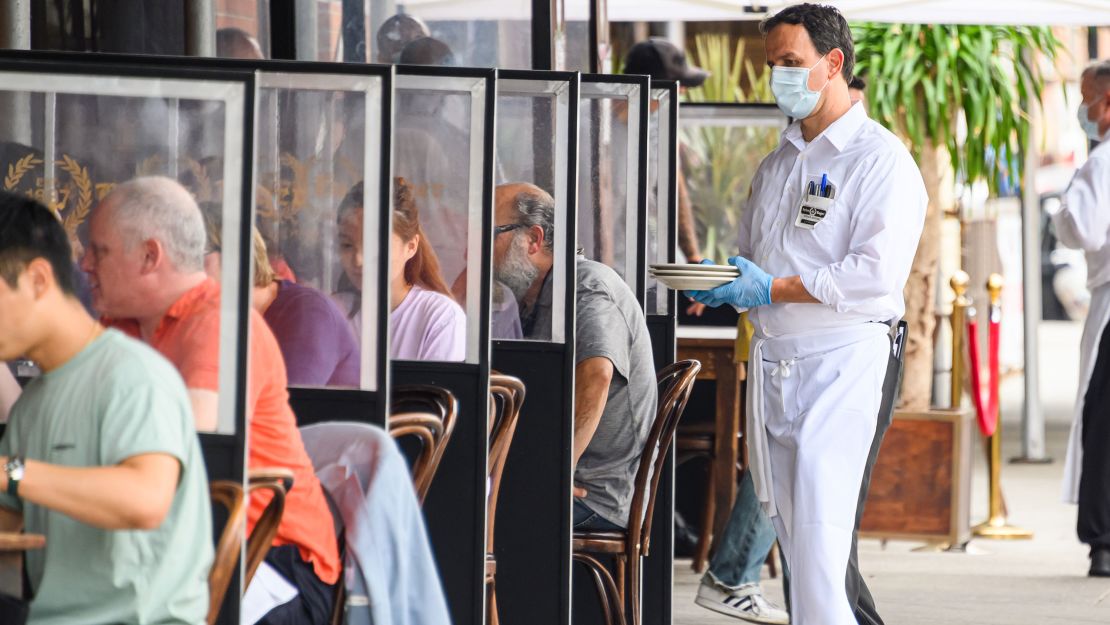
“A big tip is just ask the restaurant you’re visiting what they’re doing,” said Kirsten Kilburn, a bartender and server at The Smith in Manhattan, which has installed washing stations at the entrance and acrylic glass between indoor diners, among other measures. “Call them up and ask what they’ve implemented for safety since reopening and what’s their protocol. Not knowing is the worst thing, so having a little more understanding can be comforting.”
As a general rule, I avoid establishments that can’t answer basic questions about what they’re doing to keep diners safe and healthy.
Many restaurants offer indoor and outdoor seating. When presented with the option, I choose to sit outside.
Health experts say it’s better to be outdoors, where the virus can dissipate into the air.
Of course, with winter approaching that might not be comfortable – especially in New York, where the temperature often dips below freezing.
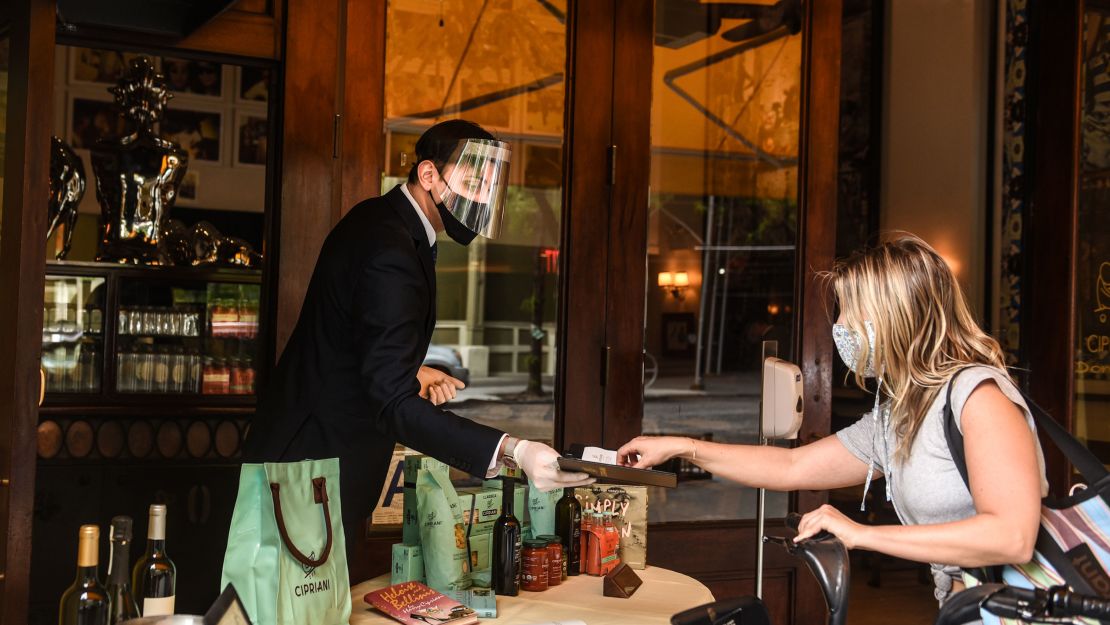
To make outdoor dining more pleasant, The Smith plans to install heaters and even offer customers blankets, Kilburn said.
Many New York bistros and cafés are even installing giant bubble tents, though it’s not clear how effective they’ll be. Some people think it’s a good option for outdoor dining, while others say it’s no different than eating indoors.
“If the bubbles are closed, which they’d need to be if it’s cold, I really don’t know how this could be considered a safe option. How many people are going to sit in a bubble where another group just sat? This could be even worse than indoor dining,” Berger said.
5. Bring your own hand sanitizer and wipes
Lots of restaurants have installed hand sanitizing stations. But you can’t always count on them being full.
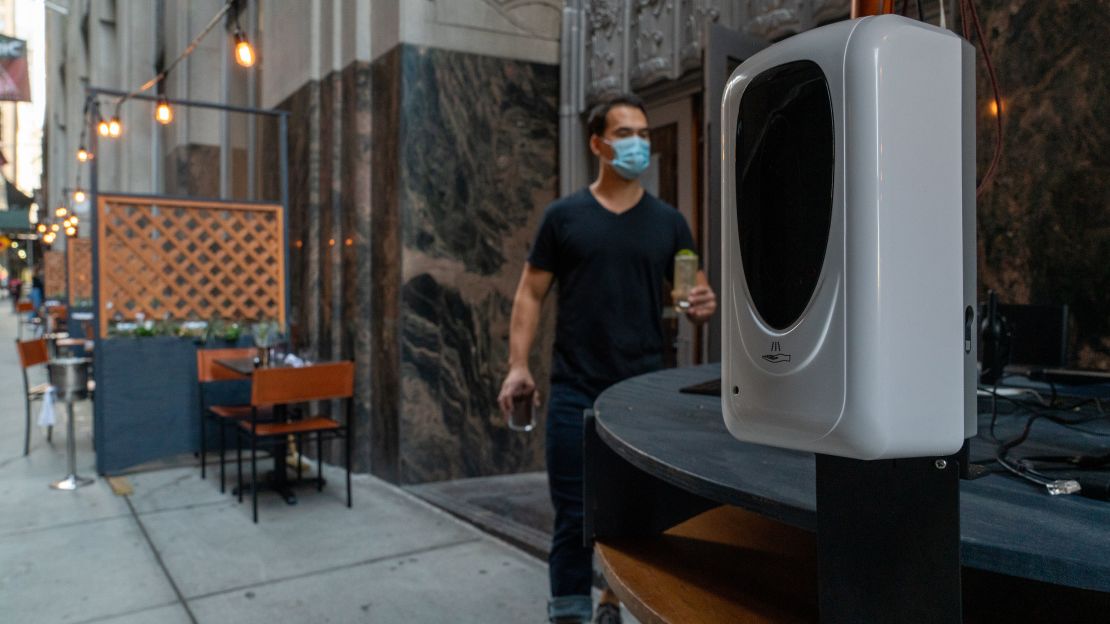
I suggest bringing your own hand sanitizer and wipes, and using them to clean your table, chairs and even cutlery.
It’s also a good idea to wipe your hands after touching the menu or returning from the bathroom.
While many restaurants are being vigilant about disinfecting, it never hurts to be extra careful.
It’s important to wear a face mask whenever you’re at a restaurant and not eating or drinking.
I keep mine hanging right below my chin, so I can quickly put it on and take it off whenever a server or another diner approaches my table. In some New York restaurants, it’s required.
“A lot of our guests appreciate that we ask people to wear their masks whenever our team members are there,” Kilburn said. “I know it’s new for all of us, I know it’s not the easiest habit to remember, but we’re responsible for protecting each other.”
It’s also a good idea to minimize contact with servers – for your safety and theirs.
“I’ve spent a lot of time thinking of how people can help the people serving them minimize the table touches,” Lewis said.
“Dining is less personable than it was before and that sucks, but ordering together instead of one at a time, being mindful of someone carrying things like dirty dishes from another table and waiting until they’ve gotten to clean their hands of that interaction before ordering your next drink is important.”
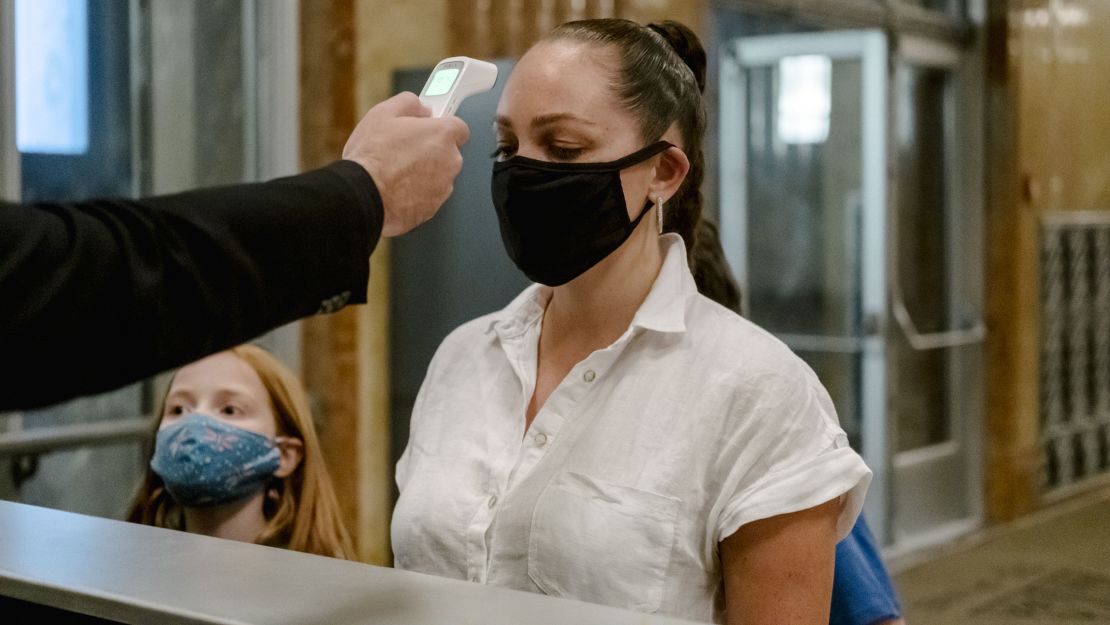
If you can hold it, do it.
In New York, clean public bathrooms are hard to come by. During a pandemic, even the cleanest bathrooms won’t be clean enough.
Small, enclosed spaces such as bathrooms pose a significant risk of transmission, Berger said.
Even worse, flushing a toilet can send plumes of germs into the air, and studies have suggested that coronavirus can be excreted in feces.
Still, if you have to go, wear your mask and bring along disinfectant wipes. You’re definitely going to need them.
Long gone are the days when you could stay out all night splitting a bottle of wine with friends.
Today, the goal of dining out should be to eat and leave as quickly and safely as possible.
To ensure that happens, I make arrangements ahead of time. For example, I make reservations to ensure I’m not waiting around for the next available table. I also read the menu online and so I know exactly what I want to order before I sit down.
Being efficient also helps restaurants, which are operating at lower capacity and struggling to make ends meet.
“We hope guests are aware that in order to keep our business going during the pandemic, especially when we can’t use all our tables, we have to turn tables,” said Gabby Ayoub, general manager at Oxomoco in Brooklyn.
“We don’t want to rush anyone, but some people are just unaware, seeing people waiting on people and they’re just lingering after they paid the check. We want everyone to feel welcome, but it’s important we meet a certain number.”
There’s never been a more important time to tip.
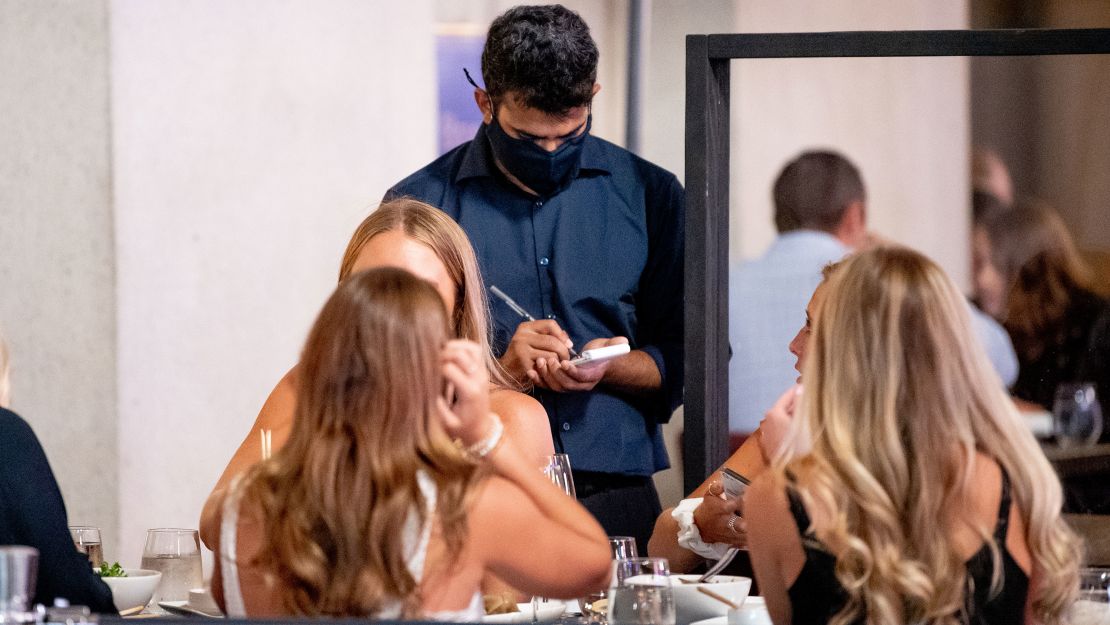
Restaurant workers are notoriously underpaid, and few receive health insurance or paid sick leave. While some cities such as New York may soon allow restaurants to tack on a coronavirus surcharge to bills, it won’t include gratuity for waitstaff.
For this reason, I suggest leaving a generous tip – 20% or more, if you can afford it.
“Most of my pet peeves come from people being inconsiderate of the risks we as service individuals take to do our job,” Lewis said. “We are treated poorly or even ripped off when it comes time to pay the bill. Tips are our livelihood, now more than ever.”
Read the full article here


